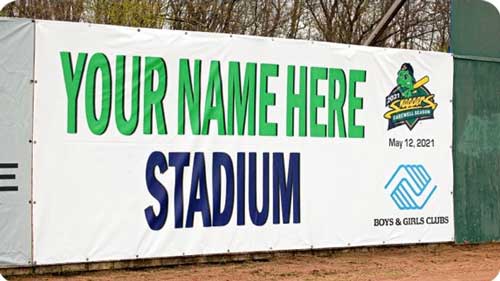Just this week I found out a friend’s middle name is the same as my first name. But wait… wait… there’s more!
We also discovered that my middle name is the same as his first name. We’ve known and worked together for most of ten years and we never knew.
How do your listeners get a sense that your station has lots of listeners? Because they hear lots of listeners. It’s like an audio version of a crowd shot.
Trust me. I’m going somewhere with this.
In their book “Made to Stick,” Chip and Dan Heath share the story of a newspaper with a remarkable 100% circulation rate: everyone in his small town reads it. The publisher’s country wisdom was simple: “Names, Names, Names,” reasoning that people read his newspaper because they wanted to see their own names (or someone else’s).

Often with new shows I get the comment, “But we don’t get any calls.” That’s because people don’t hear calls. You haven’t trained your listeners to know that interaction is a part of what you do. I recommend shows be proactive in demonstrating we’re friends in a room which inevitably primes the pump for more friends to want to be in the room. I realize that’s the chicken or the egg, but that’s how it works. (I’ll get into some practical tips on this in an upcoming Frost Advisory).
Do you know that restaurants often have people wait in line for tables despite the fact that tables are available? In many cases it’s because the restaurant knows that people want to be a part of something popular. Waiting in line (within reason) is one way to signal that lots of people like this place.
Consider your station fundraisers. I don’t have to tell you that people want to give to something that is successful. Acting like you are needy and not doing well only undermines the confidence potential donors have in your station’s effectiveness.
People donate to success!
Now don’t get me wrong, I’m not suggesting that you have listener voices on the air for the sake of having listener voices on the air. Clearly, they need to bring value and have a purpose. But I am suggesting that having a radio station that actually demonstrates what community sounds like will more quickly grow community. Hopefully, the social media component of this is fairly obvious.
I know of one top-rated rated station that has listeners introduce the traffic reports. In a focus group we heard, “I like the way the traffic guy talks right to the listener.”
I know of another top-rated station that has listener voices do what is commonly referred to as “song tags,” that detached voice that announces the title and artist. Consider how much more effective it might be to have an actual listener who loves the song do that same thing. Likely she’d encourage her friends to listen to your station to hear her voice. (It’s a wonderful thing when word of mouth can be designed into programming features).
What are the things your station is going to do anyway? The Pledge of Allegiance, birthdays, prayer, positive thoughts. Consider how the idea of names, names, names, can help your station demonstrate a sense of community. Because building community is far more important than the features alone.
*Inspired by a conversation with Matthew John Stockman
